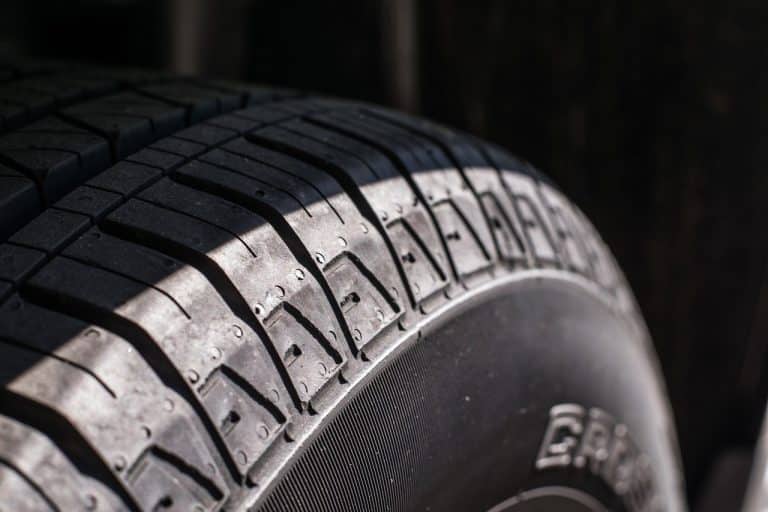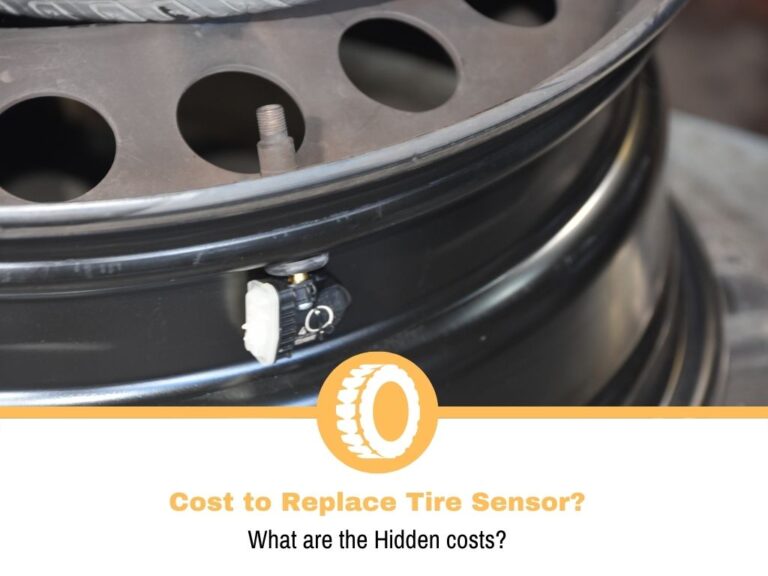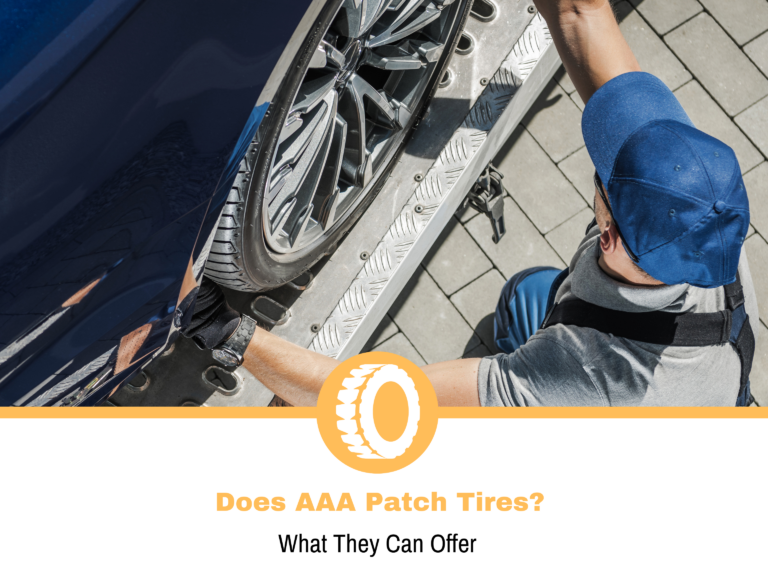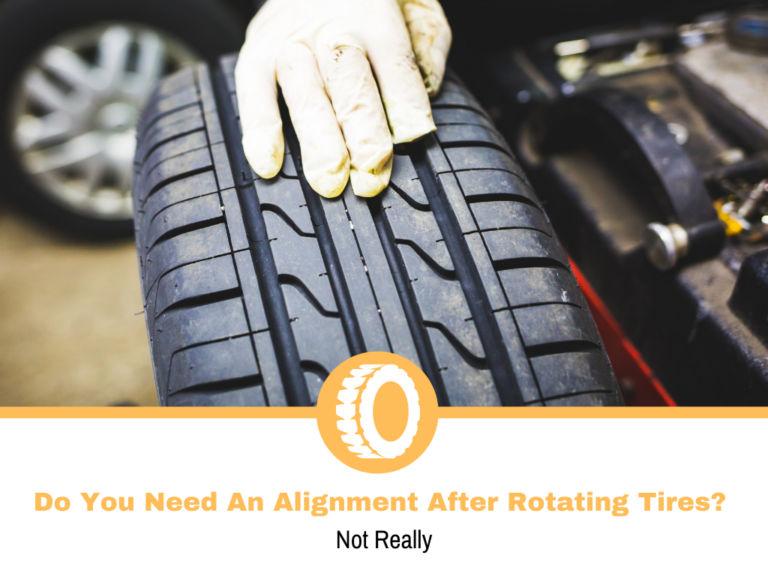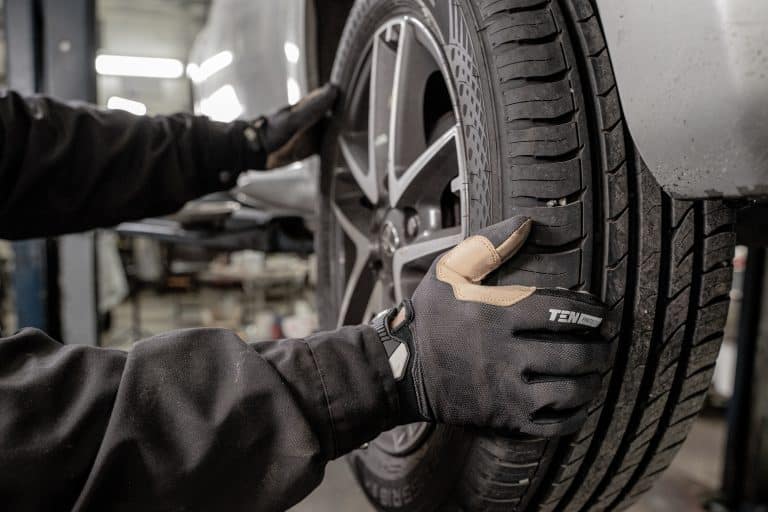Nitrogen vs. Air in Tires
Like most parts of a car, tire care is a crucial aspect that keeps your vehicle running as well as possible without compromising performance or safety. Besides that, with proper care, you ensure your tires last as long as possible, so there’s a financial gain as well.
Pressure is one of the most important aspects that contribute to a healthy tire. A while back, I talked about uneven tire wear, and most times, improper inflation can be the cause. Checking the pressure and airing up the tires is crucial to keep them performing and lasting long.
In recent decades, thanks to technological wonders, car owners were presented with another way to inflate their tires–nitrogen. Companies use clever marketing strategies to get you to inflate your tires with nitrogen, but is there a good enough reason for that?
To answer that question, I’ll outline what it means to inflate a tire with air and nitrogen and compare to see if it’s worth it or not.
Nitrogen vs. Air
Surprisingly, it doesn’t matter if you use nitrogen or air in daily driving scenarios. Even though nitrogen technically brings some improvements, you’re not at a massive dissadvantage when you use air. Factoring in that inflating tires with nitrogen costs more than inflating them with air, which is often free, there’s no point in spending the money. With that said, if you can get your tires inflated with nitrogen for free, something that’s as rare as a unicorn, then go for it.
Using Nitrogen for Tire Inflation
Nitrogen is an inert gas that’s used for tire inflation in special applications like aircraft, racing, etc. Since its adoption to the masses, some people made the switch hoping to get a better performance, something that I don’t think it’s really worth it.
There are advantages and the biggest one is in terms of tire deflation. The molecules of nitrogen are larger, so over a longer period, it won’t “escape” as quickly, resulting in a tire that won’t need to be inflated too often. While we can consider this a plus, tires filled with nitrogen are still prone to minor pressure drops.
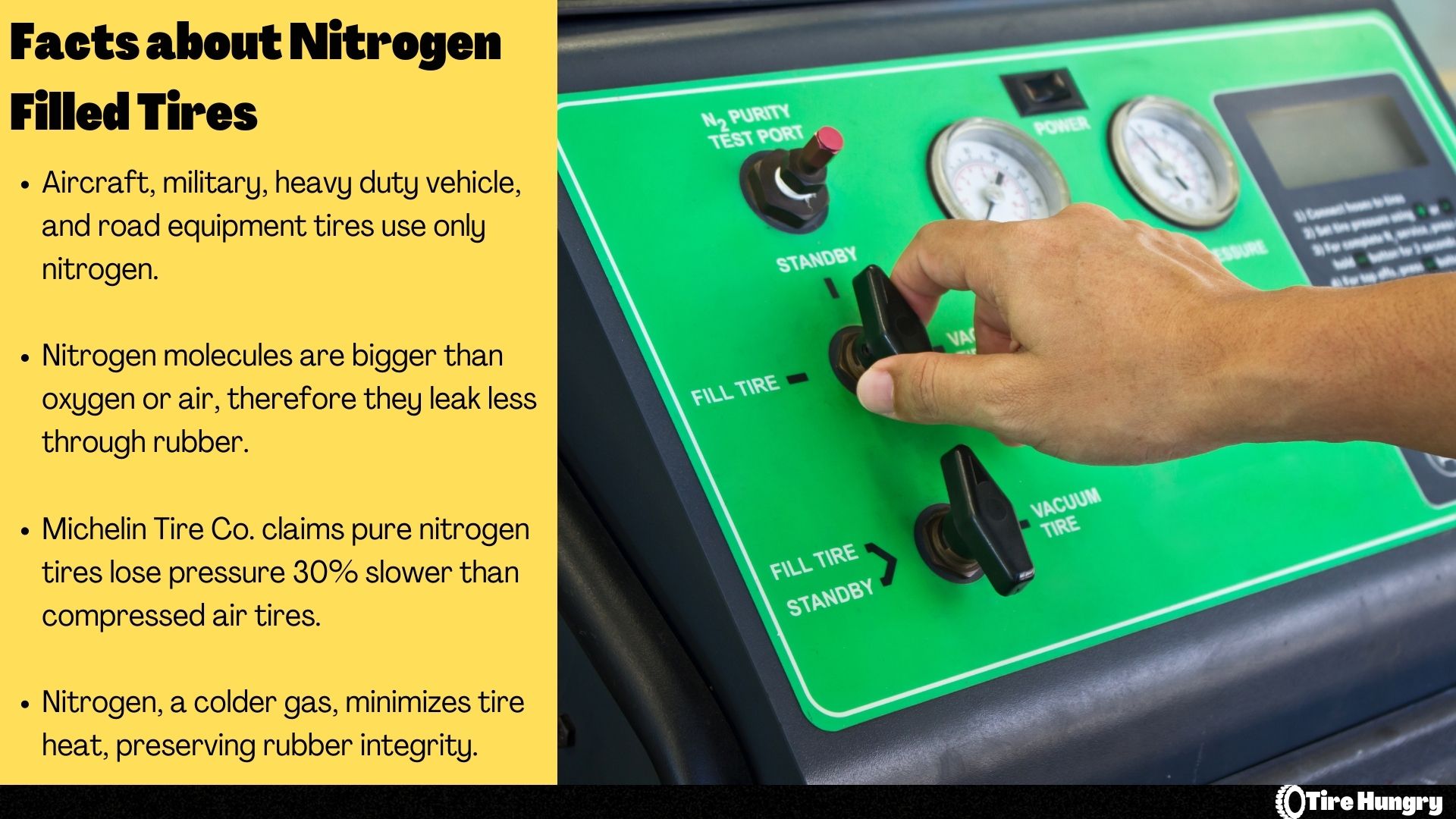
Another gain is in terms of corrosion. Nitrogen is a dry gas that doesn’t support moisture. You’re removing the elements that cause corrosion–oxygen. As a result, you won’t have to deal with that pesky rust forming on the inner side of your steel wheels.
Nitrogen has been used in racing for a long time. On a track, tires inflated with nitrogen have more consistent pressures even when there are larger temperature differences. When driving to work, having a pressure difference of a few PSIs is something you may not even notice. In racing, even 1 PSI makes a difference and the driver will notice it.
Using Air for Tire Inflation
Not sure what I can talk about here, but here’s a quick rundown. Regular breathable air is what most of us use to inflate our tires. It does a decent job of keeping tires inflated for a while, but I’d recommend regular checks.
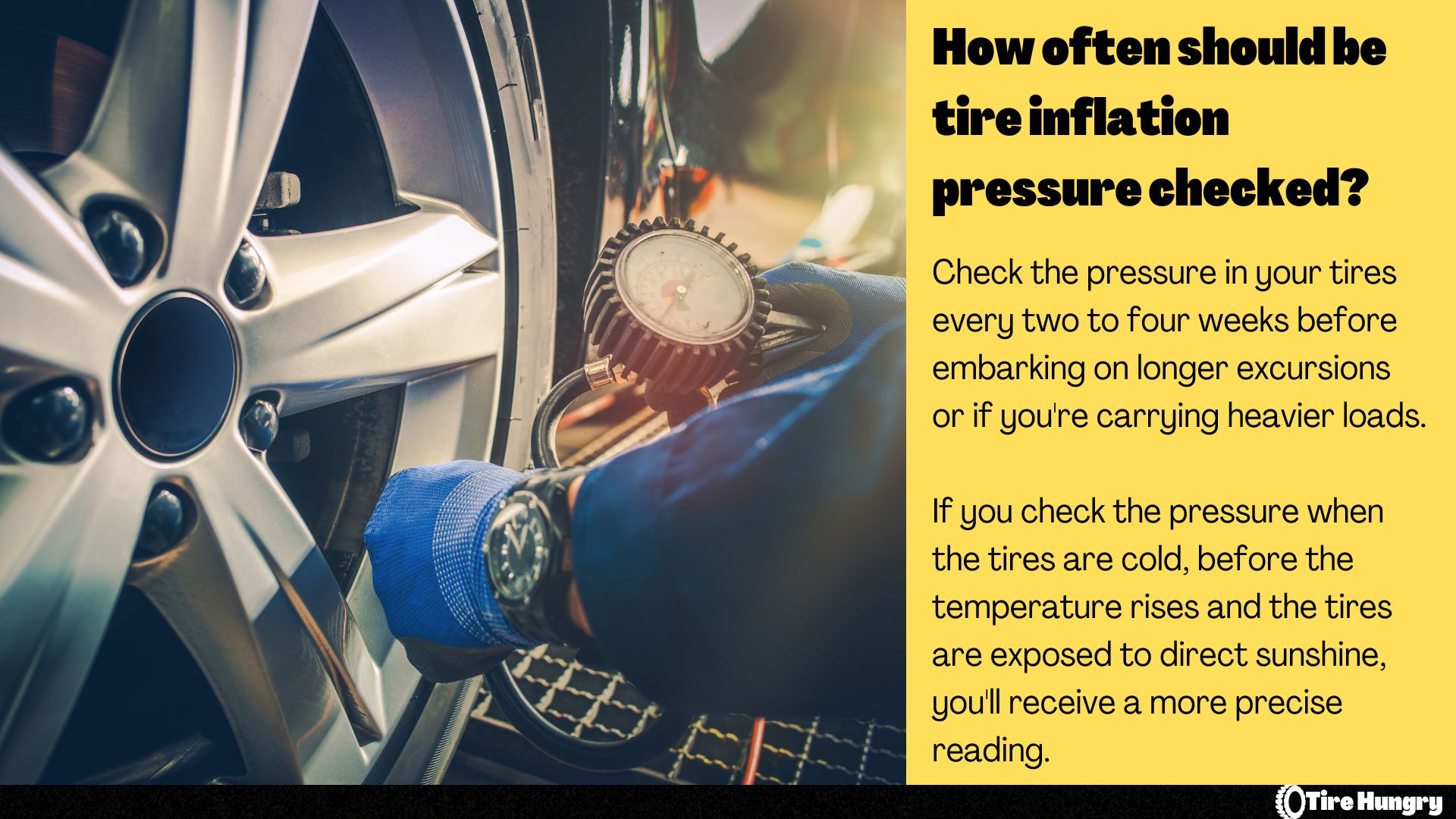
Using air to inflate your tires is a much more flexible way. You can do it at a gas station, tire shop, in your driveway, wherever you need. In desperate times, you can even use a bicycle pump, with fitment for tire valves.
For daily driving scenarios, the air gets the job done nicely. It keeps the pressure of the tire well enough and while there are some pressure differences in different tire temperatures, they won’t cause damage or performance losses.
Which is Better for Tire Inflation: Nitrogen or Air?
The shortest answer is that both are excellent at their job, and whichever one you choose, you won’t feel like you made a mistake. Most drivers won’t even notice a difference in regular driving conditions, so there’s no way to think that you’d have massive gains.
Nitrogen does better than air when it comes to losing pressure. With this in mind, I may recommend it to people that don’t have a habit of checking tire pressure regularly. It won’t do wonders, but when compared with the air, you are likely to lose less pressure if you inflate your tires with nitrogen.
Cost is a big factor in which of these two should you choose. Nitrogen is more expensive than air when it comes to inflating your tires. You won’t get tons of advantages that can justify throwing extra money at it. There are tire shops will offer free nitrogen inflation if you buy or replace tires from them, so it’s a good bargain. Apart from that, I can’t find a situation where you should prioritize nitrogen over air.
How is Nitrogen Different from Air?
If you’ve been paying attention in chemistry class, you know that about 78% percent of the air we breathe consists of nitrogen. There’s 21% of oxygen and about 1% of other gasses. With this in mind, you’re wondering why is nitrogen so different.
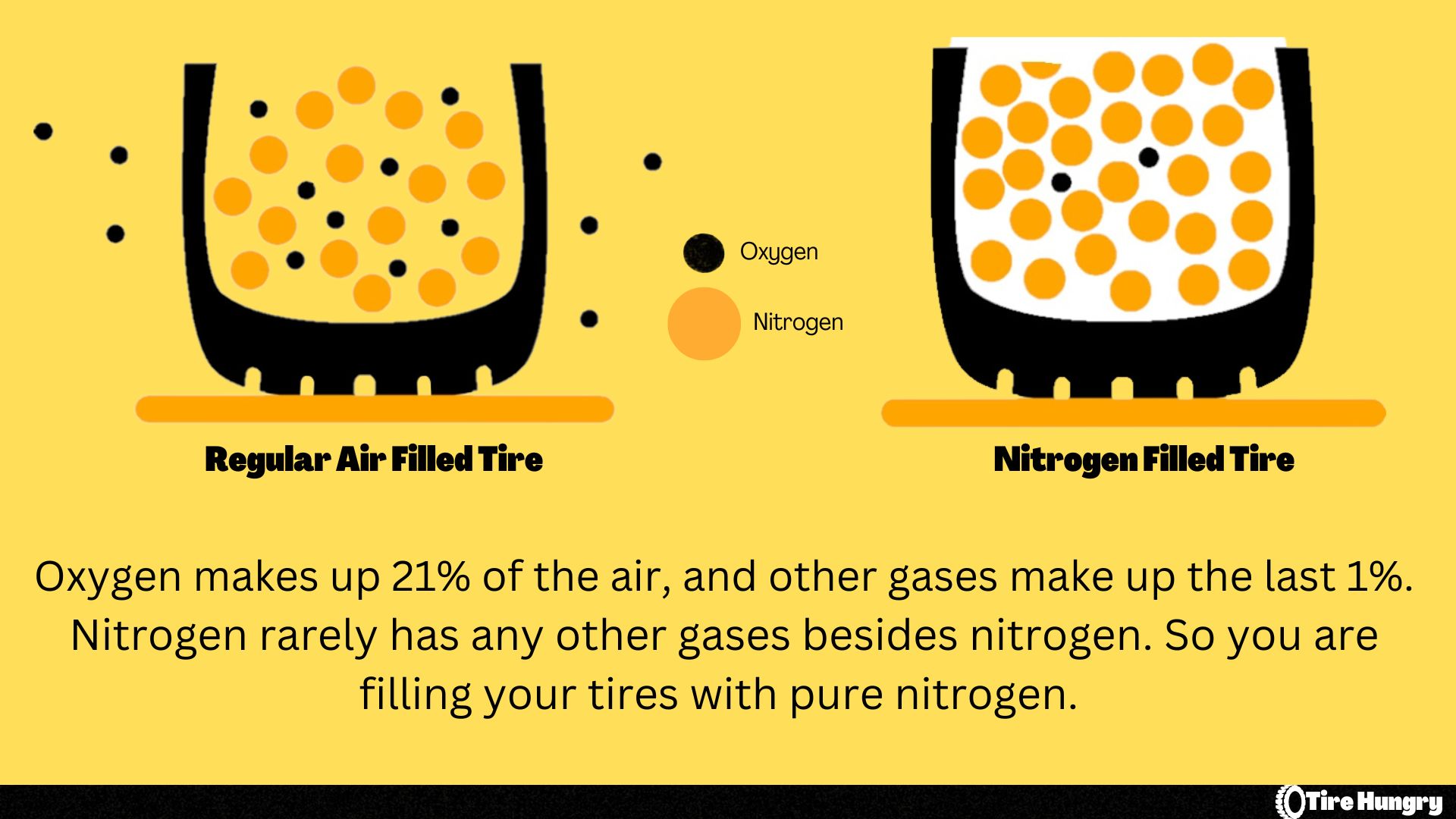
Even though the air we breathe mostly consists of nitrogen, there’s also oxygen and with that, you can expect rust. The main reason nitrogen is used in racing is that it’s a non-flammable gas. Don’t take this the wrong way, I’m not saying your car’s tires will suddenly combust and burn, but in racing, everything is turned up to 11, including the torture the tires take. Fires happen, and nitrogen is one way to eliminate a potential fire hazard, at least in the tires.
How are Tires Inflated with Nitrogen?
Tire inflation is a standard process, a tube gets connected to the valve, and the pressure in the tire increases. When you’re using air, it doesn’t make any difference, as the same mixture will be inside the tire as it will be in the atmosphere. With nitrogen, things are different.
If you’ve seen how tires are fitted to the rims, you know it doesn’t “stick” to the sides and there’s an air pocket inside the actual tire. If you inflate that with pure nitrogen, you’ll get a mixture that can be like regular air. To combat this, tire shops have multiple mechanisms to remove the air from the tire by going through several inflation and deflation cycles. This doesn’t create a 100% pure nitrogen atmosphere in the tire, but it’s usually around 95%.
This may go against everything I mentioned about having a “pure” mixture in the tires, but 95% is over 78%, so there is a difference and in certain conditions, it can be noticed.
Can you Inflate your Tires with Nitrogen at Home?
If you’re rich enough, you can. Most tire shops have special equipment used to extract nitrogen from the air. Without getting too technical, it’s a type of generator that relies on a membrane that separates nitrogen from oxygen. Once the process is complete, the nitrogen is stored in a tank waiting to be used. To use this kind of setup, tire shops use compressed air as a source that runs through the separating machine.
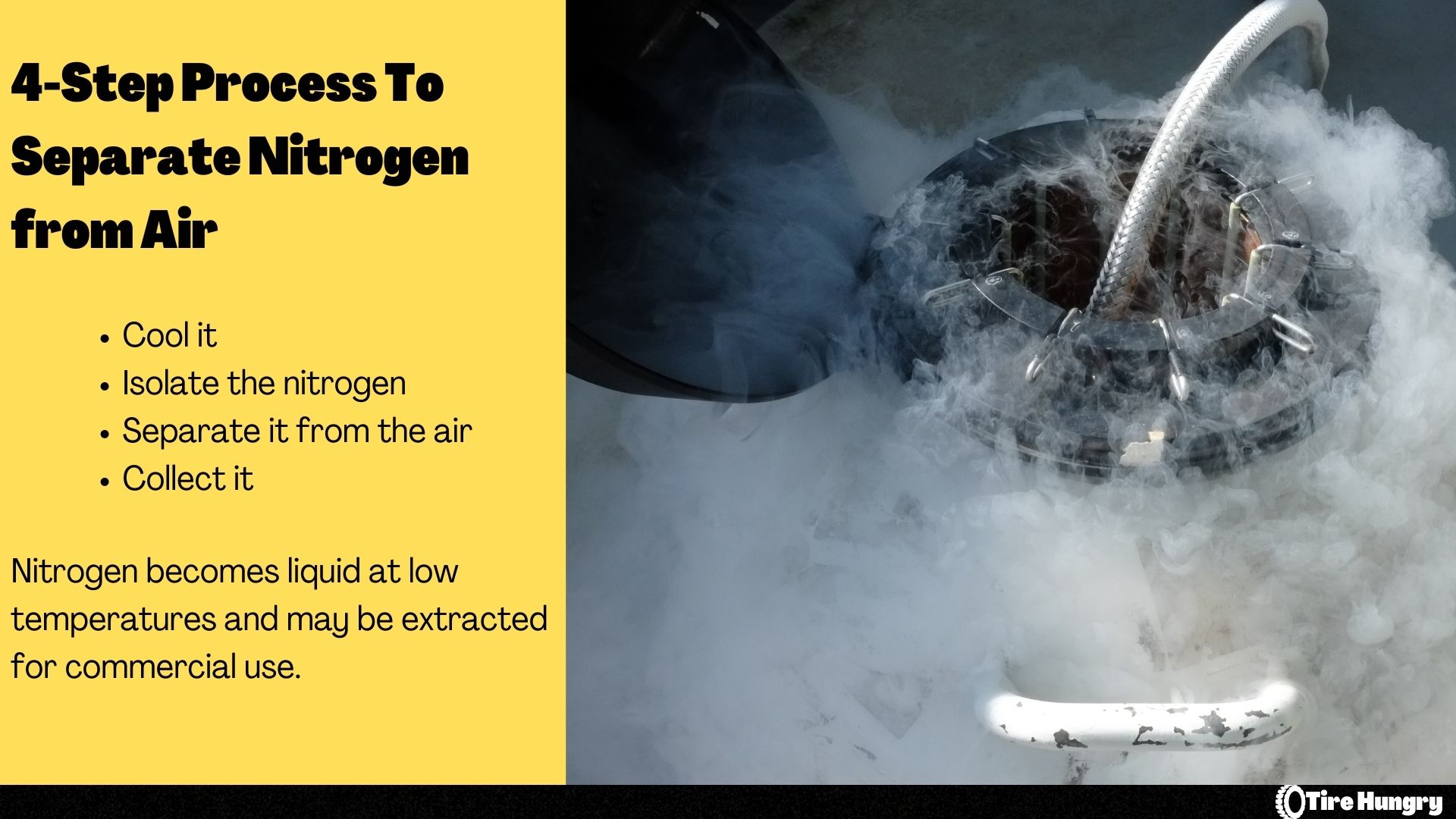
These setups are not something that only tire shops can have, and if you’re willing to invest a lot of money, you can have them in your garage. The problem with this is that not only will it cost a lot, but it also takes up space. For a couple of tires, it may be cheaper to pay at a tire shop to have your tires inflated with nitrogen.
Can you Inflate a Tire with Air After it was inflated with Nitrogen?
Let’s say you replaced your tires, and the shop inflated them with nitrogen for free. You need to inflate them a bit after a few months. One option is to pay and have them topped off with nitrogen, but you may think that it’s possible to do that without paying.
A tire inflated with nitrogen will have 95% or more of it, so you can inflate it with air with no damaging effects to it. Since most of the air is nitrogen, it won’t change anything for the tire and will still continue to perform as before. The only difference is that as you inflate the tire, with each passing, you’ll be introducing more oxygen into the mix, reducing the amount of nitrogen that’s already there. In a worst-case scenario, you won’t end up with less than 78% of nitrogen if that’s your primary concern.
Are There Performance Differences Between Tires Inflated with Nitrogen and Air?
When you compare the same model, on the same car with the same dimensions inflated per spec, you won’t notice any difference. Regardless of which gas you use, as long as the pressure is as the car manufacturer specified, the tire will behave the same. The type of gas doesn’t determine the levels of grip or traction, it just ensures that it will keep the tire properly inflated.
A few years ago, I found a local tire shop that offered me a set of new tires and free nitrogen inflation. I was happy as a dog with two tails and curious about the gains. Next season, when I was replacing my winter tires with the summer ones I purchased, I inflated them with air. The car drove and behaved the same as before.
Conclusion
Nitrogen isn’t something that will magically bring tons of improvements to your tires. The performance levels will stay the same and the only difference you’ll notice is how much pressure your tires are losing over time. With nitrogen, the process will be “slower” so you won’t need to inflate them as often as you would with air.
Your Camry won’t benefit from nitrogen, so I’d say that it’s pointless to pay for that. Go for it if you can get that done for free. You have nothing to lose and you’ll make fewer trips to the gas station or tire shop to inflate your tires.
While nitrogen brings no improvements in daily driving scenarios, in racing, it’s a different story. If you’re doing a lot of track activities, then you will notice some benefits.
Overall, unless your commute to work goes through the Nürburgring, then you’ll probably don’t need to inflate your tires with nitrogen.

